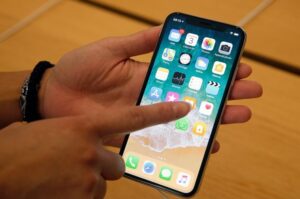According to a recent Pew Research study at https://www.pewresearch.org/internet/fact-sheet/mobile/, “The vast majority of Americans – 96% – now own a cellphone of some kind. The share of Americans that own smartphones is now 81%, up from just 35% in Pew Research Center’s first survey of smartphone ownership conducted in 2011. Along with mobile phones, Americans own a range of other information devices. Nearly three-quarters of U.S. adults now own desktop or laptop computers, while roughly half now own tablet computers and roughly half own e-reader devices.”

Another fact is a growing share of Americans now use smartphones as their primary means of online access at home. Today roughly one-in-five American adults are “smartphone-only” internet users – meaning they own a smartphone, but do not have traditional home broadband service.
Interestingly, 91% of the senior population own a cellphone of some type, and 53% own a smartphone. It seems smartphones have no boundaries when it comes to the different age groups.
The original cell phones only placed and received telephone calls. Within a very few years, most cell phones added cameras. However, the real growth area lies with the intelligent cell phones that have built-in computer functionality. These are typically called “smartphones.” Let’s examine these.
Smartphones available today are mostly either the Apple iPhone or more often are Android phones with the operating software created by Google but with the phones are manufactured by a wide variety of manufacturers. Besides serving as telephones and cameras, these smartphones allow the user to install and use various programs, such as web browsers, email programs, spreadsheet programs, word processors, genealogy programs, instant messaging programs, GPS navigation, and a wide variety of games. Most smartphones now have a variety of programs to choose from, including some that access and update the cloud, Facebook, and Twitter. In other words, most of today’s smartphones are full-fledged computers in the same manner as our desktop systems or laptop computers, only with much smaller display screens and tiny keyboards.
For a smaller group of users, especially in third-world countries, the smartphone may be the only computer the person owns. Smartphones are cheaper than computers and more convenient because of their portability. Many people, myself included, now use a smartphone to surf the web more often than they use desktop computers.
Article courtesy of Dick Eastman’s Online Genealogy News Blog and Pew Research Center 6-9-2020
